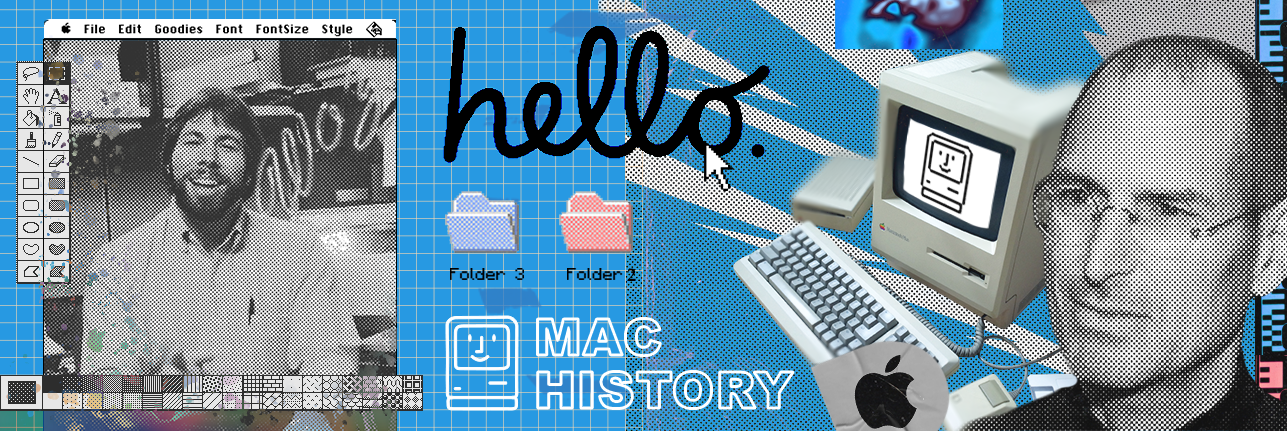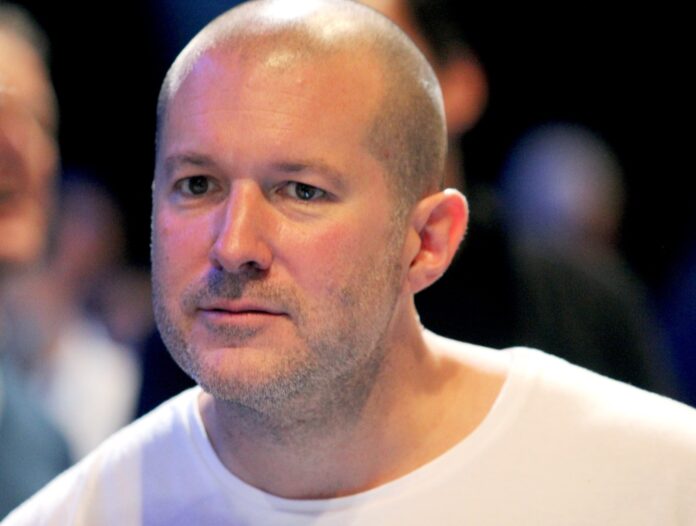Jonathan Paul “Jony” Ive is a legendary designer who was responsible for the design of many of Apple’s most iconic products, including the iMac, iPod, iPhone, and iPad. Jony Ive has played a critical role in the company’s product design strategy, helping to establish its reputation for sleek and innovative design.
Jony Ive was born on 27 February 1967 in Chingford, a town in east London in England. His father, Michael John Ive, was a silversmith, and his mother, Pamela Mary Ive, was a psychotherapist. Jony Ive attended Chingford Foundation School just outside London, later to be the alma mater of David Beckham. While in school, Ive was diagnosed with dyslexia, but it never seriously affected his education.

Ive was curious about the inner workings of things throughout his childhood and was fascinated by how objects were put together. He would carefully dismantle radios and cassette recorders, exploring how they were assembled and how the pieces fit. Although when he tried to put the equipment back together again, he didn’t always succeed.
In a 2003 interview conducted at London’s Design Museum he said, “I remember always being interested in made objects. The fact they had been designed was not obvious or even interesting to me initially. As a kid, I remember taking apart whatever I could get my hands on. Later, this developed into more of an interest in how they were made, how they worked, their form and material.”
By the age of thirteen or fourteen he was pretty certain that he wanted to draw and make stuff. “I knew that I wanted to design but I had no idea what I’d design as I was interested in everything: cars, products, furniture, jewellery, boats. After visiting a few design consultancies I eventually decided that product design would be a pretty good foundation as it seemed the most general.”
He studied art and design at school and went on to Newcastle Polytechnic. “I figured out some basic stuff — that form and colour defines your perception of the nature of an object, whether or not it is intended to. I learnt the fundamentals of how you make things and I started to understand the historical and cultural context of an object’s design. I wish my drawing skills had improved, but while that bothered me then, it doesn’t now.”
It was during his college years when Ive further developed his signature design style based on German Bauhaus tradition. This design philosophy embraced a minimalist approach, where designers should only design what is needed. And these were the same principles followed by former Braun designer Dieter Rams, and later you can see similarities in the products each of them Ive had created.
How Jony Ive joined Apple
After graduating 1989, Ive joined London-based design startup Tangerine, bringing bathroom manufacturer Ideal Standard along as a major client. But Ive’s designs for sinks were never turned into a product because they would have been too expensive to manufacture. In the fall of 1991, then-Apple design chief Bob Brunner appeared at Tangerine and commissioned four design studies.
Under Ive’s guidance, Tangerine’s Juggernaut project included the never-built “Macintosh Folio” tablet computer – which was to be operated with a stylus and was still five times as thick as the first iPad 18 years later. Ive recalls his experience there: “I was pretty naïve. I hadn’t been out of college for long but I learnt lots by designing a range of different objects: from hair combs and ceramics, to power tools and televisions. Importantly, I worked out what I was good at and what I was bad at. It became pretty clear what I wanted to do. I was really only interested in design. I was neither interested, nor good at building a business.
It was not inevitable in Ive’s career that he would one day shape the design of a major computer company like Apple. Quite the opposite. The young Brit initially had problems finding his way in the world of personal computers. “I went through college having a real problem with computers“, Ive recalls in the interview with the Design Museum. “I was convinced that I was technically inept, which was frustrating as I wanted to use computers to help me with various aspects of my design.” Right at the end of his time at college Ive discovered the Mac. “I remember being astounded at just how much better it was than anything else I had tried to use. I was struck by the care taken with the whole user experience. I had a sense of connection via the object with the designers.”
Ive started to learn more about the company, how it had been founded, its values and its structure. The more he learnt about this cheeky, almost rebellious company the more it appealed to him, as it unapologetically pointed to an alternative in a complacent and creatively bankrupt industry. “Apple stood for something and had a reason for being that wasn’t just about making money.”
In the early 1990s, Ive was living in London again and working with a number of clients in Japan, the US and Europe at Tangerine. Apple did a search to find a new design consultant and decided to work with him. Ive: “I still remember Apple describing this fantastic opportunity and being so nervous that I would mess it all up. While I had never thought that I could work successfully as part of a corporation — always assuming that I would work independently — at the end of a big program of work for Apple, I decided to accept a full-time position there and to move to California.” In September 1992, at age twenty-seven, Ive accepted a full-time position at Apple, and his first assignment was to redesign the Newton MessagePad.
At the time, Apple was being run by John Sculley since Steve Jobs had been forced out six years prior. The desktop publishing revolution was putting Macs in businesses all over the world and Apple had just celebrated its first quarter earning two billion in revenue. With all this cash, Apple was expanding it product lines and Sculley was investing heavily in R&D to speed up development of new products like the Apple Newton.
Failure and success with the Apple Newton
The first version of the Apple Newton was a failure, but Apple was hoping to change that with its second iteration. Ive worked tirelessly on the project and involved himself in every last detail. He even traveled to Taiwan to fix manufacturing problems. But no amount of effort from Ive was enough to save the Newton. Apple had made marketing and engineering mistakes that plagued the Newton until it was finally discontinued.
The Apple Newton proved to be a business failure and strategic setback, but Jonathan Ive’s Newton was a design success. It earned him four of the top awards in the industry and the honor of being featured in the permanent collection of the San Francisco Museum of Modern Art.
However, Apple CEO John Sculley not only had a poor sense of direction when it came to developing new product categories, but also had to contend with major difficulties in the core business. In 1995, the crisis became obvious. Windows 95 was released, and cheap PCs began to fly off the shelves, undercutting the Mac. In the first quarter of 1996, Apple reported 69 million dollar loss and laid off 1300 employees.
This caused Apple’s focus to shift from developing high-quality, well-designed Macs to pushing out the cheapest machines they could possibly make. This was truly a period of no innovation at Apple, and it destroyed Jonathan Ive’s moral. He said: “All they wanted from us designers was a model of what something was supposed to look like on the outside, and then engineers would make it as cheap as possible. I was about to quit.”
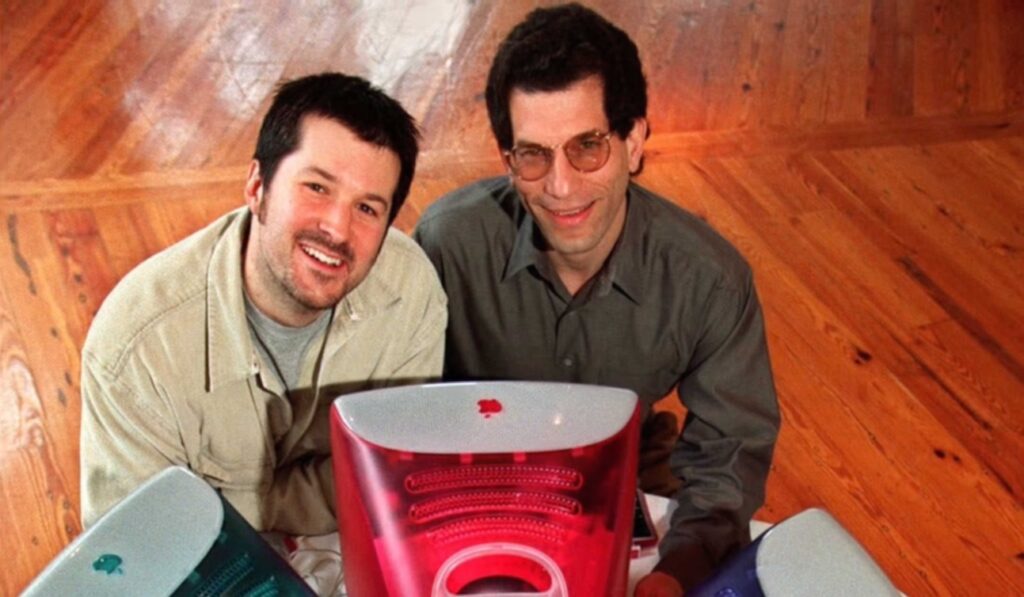
© Photo: Susan Ragan (dpa/AP )
But before Jony Ive could resign, Jon Rubinstein, his new boss, talked him out of it. Rubinstein gave him a raise and told him that eventually the company would turn around and they’d have the opportunity to make history. And with Jobs return to Apple in 1997, Rubinstein was exactly right. Jobs brought focus to not only the company but also Ive’s design group. In the interview with the Design Museum Ive recalls: “When I joined Apple the company was in decline. It seemed to have lost what had once been a very clear sense of identity and purpose. Apple had started trying to compete to an agenda set by an industry that had never shared its goals. While as a designer I was certainly closer to where the decisions were being made, but I was only marginally more effective or influential than I had been as a consultant. This only changed when Steve Jobs returned to the company. By re-establishing the core values he had established at the beginning, Apple again pursued a direction which was clear and different from any other company. Design and innovation formed an important part of this new direction.”
Jobs refocused the design team and got them working together on a new project called the Mac NC, which would later become the iMac. The team only had nine months to get it from design to production. To meet this deadline, Ive implemented a radical, integrated design process that transformed the way Apple developed its products. The workflow was so successful that it became permanent, and it’s essentially the same system the design group uses today. So the iMac was released nine months later and ended up being the best-selling Mac in Apple’s history up to that point.
Ive and his team became famous for its fanatical care beyond the obvious stuff: the obsessive attention to details that are often overlooked, like cables and power adaptors. Ive recalls: “Take the iMac — our attempts to make it less exclusive and more accessible occurred at a number of different levels. A detail example is the handle. While its primary function is obviously associated with making the product easy to move, a compelling part of its function is the immediate connection it makes with the user by unambiguously referencing the hand. That reference represents, at some level, an understanding beyond the iMac’s core function. Seeing an object with a handle, you instantly understand aspects of its physical nature — I can touch it, move it, it’s not too precious.”
Jonathan Ive had finally found a company that gave him the freedom to practice his craft effectively without limitations. In fact, part of Jobs reorganization of Apple included giving the design team power over any other group, including engineering. And because Ive was head of design, he had a tremendous amount of operational power at Apple, second only to Steve Jobs. Jonathan “He’s not just a designer,” Mr. Jobs told his biographer, Walter Isaacson. “He has more operational power than anyone at Apple, except me.”
Starting in 2002, Jobs and Ive set about turning the vision of an iPod smartphone into reality. In a few detours and with the help of a team that was supposed to develop a tablet computer, the iPhone was born and presented to the astonished public in January 2007.
The iPhone also meant a tribute by Ive to Dieter Rams, the legendary chief designer of Braun. Users should understand products intuitively, without an instruction manual, was Rams’ motto. The minimalism and simplicity of the iPhone proved such a resounding success that competitors like Samsung quickly and shamelessly copied the concept.
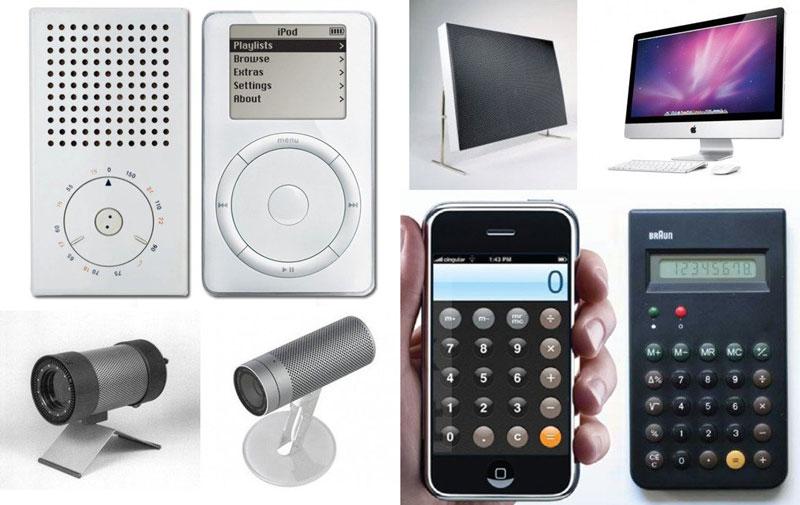
In one respect, however, Ive was unfaithful to the model from Germany: for Rams, the maxim that form must follow function still applies today. Ive, on the other hand, gave the engineers such strict guidelines that certain functions fell by the wayside. For example, the headphone jack in the iPhone 7 was sacrificed to save space and make the case a bit slimmer. The same reasoning was used to justify the MacBook’s lack of multiple input and output interfaces – forcing users to buy cumbersome adapters to be able to read photos from an SD card, for example. Critics also blame Ive’s efforts to produce thinner and thinner devices for the latest fiasco and the butterfly keyboards in the MacBooks.
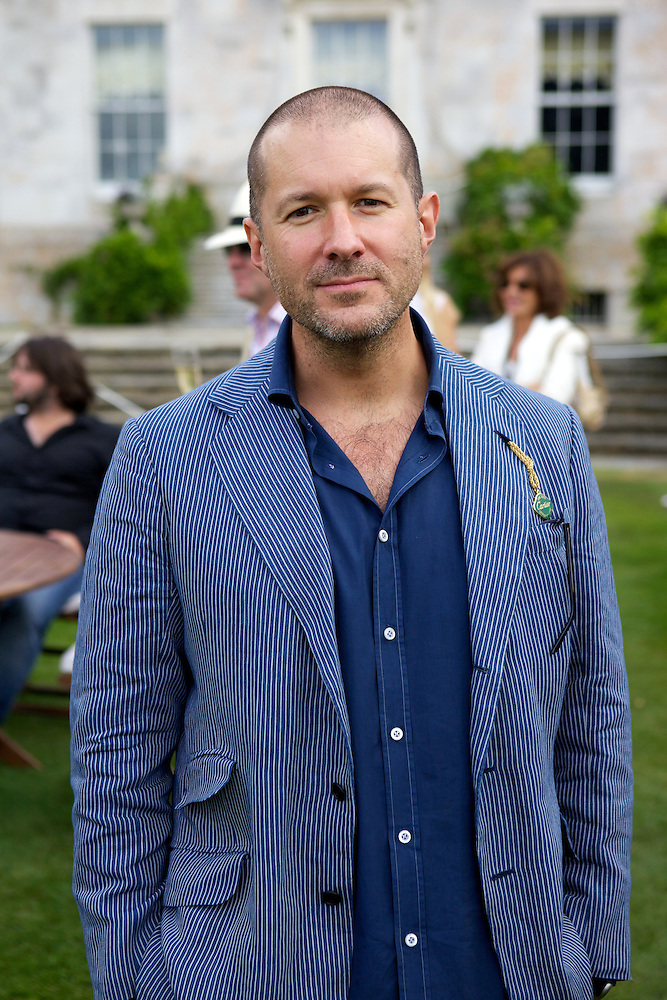
Alongside Steve Jobs, Jony Ive has always appeared in the past to be the gentle type who strives for balance. But this thesis is not correct: Ive repeatedly engaged in heated controversies with other Apple managers about the technical and financial effort required to implement design ideas. When designing the first Mac mini, for example, Ive and his team designed the case so that it was just two millimeters too narrow to use a conventional 3.5-inch hard drive. So they had to use a much more expensive 2.5-inch drive, which was usually only used in laptops. Under Steve Jobs’ umbrella, Jony Ive and design took precedence over cost considerations.
Ive clashed primarily with his old mentor Jon Rubinstein, who was actually his supervisor. But when in doubt, Steve Jobs always decided against Rubinstein and other pragmatists in Cupertino. When the Apple boss also promoted his protégé Ive to senior vice president in 2005, it was time for Rubinstein to leave Apple. His successor, Tony Fadell, was also constantly at odds with Ive. When Fadell left Apple in October 2008 with a golden handshake, the controversy was still kept under wraps. It wasn’t until the publication of Leander Kahney’s Ive biography that the conflict became known in full detail.
The most prominent loser in a power struggle with Ive in 2013 was Scott Forstall, who three years earlier had been considered a possible successor to Steve Jobs, who had fallen ill. Ive disliked the software design (“skeuomorphism”) preferred by Forstall: Until the iPhone operating system iOS 6, it used the shapes of familiar objects that actually had no function, such as the virtual leather cover on the calendar application. Ive enforced “flat design,” a much more abstract design language, on iOS 7. After this defeat, Forstall left the company. Ive then also took over responsibility for “human interface” design. However, some Appleians in Cupertino still mourn Forstall’s passing.
During Steve Jobs’ lifetime, Jony Ive was clearly in second place in Apple’s internal hierarchy. But when the company’s co-founder died of cancer in October, it was clear that Tim Cook would be his successor, not Ive. Jony Ive stood for the soul of the company, but had little interest in the business figures.
After the death Steve Jobs Ive in a moving eulogy convince the assembled staff that Apple will not lose sight of its great vision even without the charismatic leader Steve Jobs.
But the death from cancer of his friend apparently hit Ive much harder than most Apple employees. The Brit missed the almost daily exchange of views with Jobs over lunch and the regular visits by the company boss to the otherwise almost hermetically sealed design studio.
At the same time, public and shareholder pressure was growing at the time for Apple to launch a new smash hit after the iPhone (2007) and iPad (2010). Some stock market analysts doubted whether Apple would even be able to innovate after Jobs’ death.
At this stage, Ive pushed to build a smartwatch. For the first model of the Apple Watch in 2015, Ive pursued his idea of making the smartwatch primarily a fashion accessory. The watch was sold in fashion stores and, for a jet-setting audience, was also offered in a sinfully expensive high-end variant with an 18-carat gold case.
But it quickly became apparent that the mass of buyers did not want to follow Ive. Many of the gold models went unsold. Users weren’t looking for a luxury watch, but a practical gadget that would allow them to keep track of their fitness activities and see notifications without constantly pulling their iPhone out of their pocket. After this setback, Ive asked Apple Group CEO Tim Cook to be relieved of his day-to-day management duties, the Wall Street Journal reported.
Cook, however, was all about keeping Ive on board at all costs during this critical phase. It didn’t matter that Cook, in contrast to his predecessor Steve Jobs, showed up much less often at Apple’s design studios. He appointed Ive as “Chief Design Officer”, who would not only be responsible for the hardware and packaging of the devices, but also for the software design as well as the design of the Apple Stores and the new company campus Apple Park.
Paradoxically, after his promotion to “Chief Design Officer” in May 2015, Ive had hardly any influence on the design of concrete Apple products. Only the Apple Watch was an exception. Ive was now primarily concerned with the design of the company’s new Apple Park site. For two years, he was more likely to be seen in rubber boots on the construction site than in his team’s design studio. It wasn’t until the end of 2017 that the Apple Park chapter was largely closed for Ive.
Afterwards, the members of the design team had hoped that Ive would now be available more often in Cupertino for detailed decisions. But these expectations were not fulfilled. Ive now frequently worked in his personal design studio in San Francisco near his home, saving the annoying stop-and-go trips on the dust-laden highway to Cupertino. Communication with the design team suffered as a result.
Apple announced on 27 June 2019 that Ive would depart the company. The decisive factor for Apple’s exit was probably Ive’s pronounced desire to no longer take responsibility for things that he could only influence to a limited extent. This includes topics such as the development of iPhone sales or the company’s share price. In a February 2015 Ive portrait in The New Yorker magazine, the designer is quoted as saying he is “deeply, deeply tired” and “always anxious.” And Laurence Powell Jobs, Steven Jobs’ widow, chimes in with this assessment: “Jony is an artist with an artist’s temperament, and he’d be the first to tell you artists aren’t supposed to be responsible for this kind of thing.”
Apple stated that Ive would start an independent firm named LoveFrom, along with fellow Apple industrial designer Marc Newson, that would work with Apple as its primary client. LoveFrom is known to keep a low profile, and does not disclose information about its employees. LoveFrom unveiled its minimalistic official website in October 2021. In July 2022, Apple ended its consulting agreement with Ive, thus ending his relationship with the company. Ive wanted the freedom to take on clients without needing Apple’s clearance.
